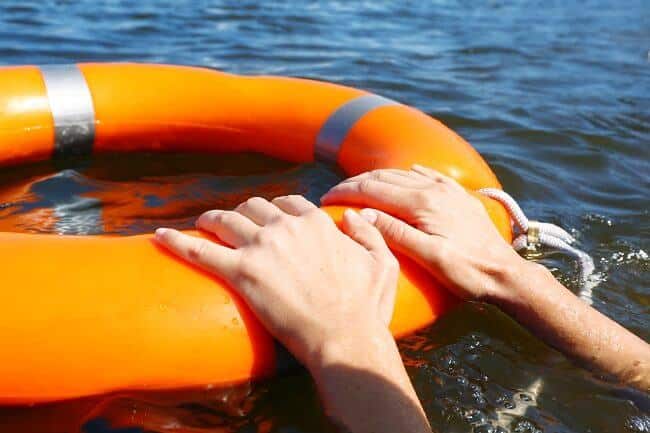

Man overboard is a situation wherein a ship’s crew member falls into the sea from the ship, no matter where the ship is sailing, on open seas or in still waters in port.
A seafarer has to be very careful while performing their duties on board a vessel as it can never be taken for granted that a person cannot fall off the ship due to bad weather, swell in the sea, accidents, and negligence.
A man overboard is an emergency situation, and it is essential to locate and recover the man overboard person as soon as possible as due to bad weather or rough sea, the crew member can drown or else due to temperature of the cold water, the person can get hypothermia.


Hypothermia is a situation wherein there is an extensive loss of body temperature due to prolonged contact of the body with cold water, and the body’s normal metabolism and functions get affected.
A person will fall unconscious after 15 minutes in water with a temperature of 5 ̊ C.
The initial and early sighting of the fallen crew plays a vital role in increasing the percentage of saving their life. The actions for a MOB mentioned below are extremely urgent and must be taken without delay to save the life of the person who has fallen overboard.
Screaming about the MOB when the mishap is realised is of paramount importance to use all manpower available for immediate use. Also, sighting a person amidst the glare during daylight is hard as visibility is compromised. Hence, immediate action is needed in such a situation to avoid fatalities in such circumstances.
The lifebuoy also adds to the life-saving process as the smoke signal leaves a conspicuous mark by the day or night. It is also important to pick up the lifebuoy to not confuse any other ships passing by about the status of the MOB. They must not assume that there is a MOB in the vicinity and proceed towards helping the person when he has already been rescued. Also, one must always wear a life jacket while working, and if one falls overboard, one should not waste energy by thrashing the waves or panicking in the water.
Entries in the Ship’s Logbook hold great legal importance and should be made carefully. Always try to succeed in the first attempt, as even a little delay can cause a human life.
Man overboard is an exclamation given onboard when a crew member or a passenger falls off the ship into the water and needs immediate rescue.
The person who sees a man overboard should raise the alarm and shout ‘man overboard!’ loud and clear to alert all crew members. They should maintain eye contact with the person who has fallen. If the person is close to the ship, floatation equipment should be lowered in his direction. Otherwise, the rescue team should be deployed.
Man overboard is an emergency situation, and the person overboard should be rescued as soon as possible. It might become difficult to locate him in case of strong waves or bad weather. He could also drown or die of hypothermia if action is delayed.
The Williamsons turn is a manoeuvre to bring the ship or vessel back under power, back to a point it already passed through, to recover a casualty at sea. It is named after John Williamson, who used it in 1943 to save a person who had fallen overboard.
If the person is close and not wearing a life jacket, then you must throw one at him. Secondly, you could also throw a lifebuoy ring, a horseshoe etc. In such a situation, anything that floats is beneficial.
You might also like to read
Disclaimer: The author’s views expressed in this article do not necessarily reflect the views of The Marine Learners. Data and charts, if used, in the article have been sourced from available information and have not been authenticated by any statutory authority. The author and The Marine Learners do not claim it to be accurate nor accept any responsibility for the same. The views constitute only the opinions and do not constitute any guidelines or recommendations on any course of action to be followed by the reader.
The article or images cannot be reproduced, copied, shared or used in any form without the permission of the author and The Marine Learners.










We believe that knowledge is power, and we’re committed to empowering our readers with the information and resources they need to succeed in the merchant navy industry.
Whether you’re looking for advice on career planning, news and analysis, or just want to connect with other aspiring merchant navy applicants, The Marine Learners is the place to be.